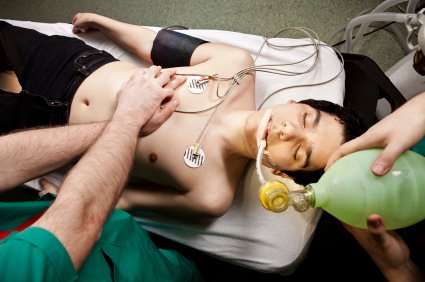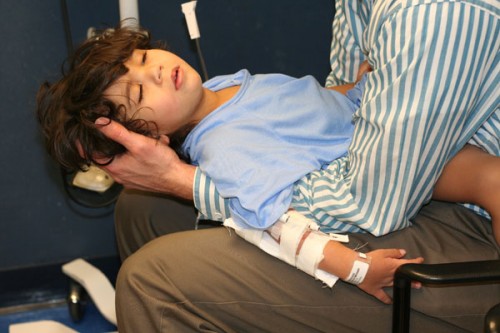Alcohol Intoxication in Children
Let’s see how well you do at playing diagnostician on this case. You have a four-year old little boy who has been in excellent health. He was sleepy in the early afternoon, so he was put down for a nap.
Five hours later he could not be awakened and had been incontinent of stool.
He was allowed to sleep until 9:30 that night, when he was brought to the emergency room.
In the ER he was found to be in a coma and breathing very poorly. While he was being examined, he had a full Grand Mal seizure. There was no evidence of bruises, and the pupils of his eyes were equal and reactive to light.
Now, what do you think of first? A head injury, poisonings, overwhelming infection, or diabetic coma are all possibilities.
He had been well and there was no fever, so it’s not likely infection.
There was no evidence or history of head trauma, and the child had not been diabetic, so that leaves poisonings.
His eyes are of normal size and reactive, so that makes narcotics and similar drugs unlikely.What is a likely poisoning in a four-year old that presents like this?
The laboratory values are of some help. His blood acid level showed a "metabolic acidosis," which means that something was taking all of the energy (sugar) away from the body’s normal cells, making them produce acid while they burn up fats.
 His blood sugar level was zero! — very, very low; and his blood drug screen showed an alcohol level of 31, which was high.
His blood sugar level was zero! — very, very low; and his blood drug screen showed an alcohol level of 31, which was high.
By the way, I should tell you that the pediatric resident has been pestering you that the child’s breath smells like mouthwash ever since he arrived in the emergency room.
It has been well documented that alcohol can induce hypoglycemic (low blood sugar) type seizures ever since 1961.
The alcohol provides very little energy and seems to counteract the sugar-producing systems of the liver such that the blood sugars can fall dramatically and rapidly.
That is why alcohol ingestion in children and adolescents can be so significant. Not so much from the alcohol toxicity, although that is important, but from the low blood sugar. The brain, which is a high utilizer of energy, then suffers and can swell.
This is an actual report of a case from an emergency room where the child then went on to die because of brain swelling. Every emergency room has many cases like these in their log books every year and today it’s not only mouthwash but hand sanitizer as well.
Symptoms of alcohol poisoning are: hypothermia (low body temperature), hypoglycemia (low blood sugar), metabolic acidosis, respiratory depression, seizures, and coma.
But where did he get the alcohol? The parents phoned home and their baby sitter found an empty 24-ounce bottle of TOPCO brand mouthwash which was 10% (20 proof) alcohol. It had been half full previously.
There have been several reports of alcohol poisoning from mouthwash, which is not surprising seeing that mouthwash ranges from 10 percent ethanol to 26.9 percent (53.8 proof).
According to the toxicology books, it would take about 20 ounces of 10% mouthwash to be lethal to a typical four-year-old.
Although he probably did not drink that much, the resulting low blood sugar caused brain swelling, leading to death. The American Academy of Pediatrics recommended to the F.D.A. that all over-the-counter liquid preparations should be limited to a maximum of 5% ethanol.
In addition, it is recommended that these products be sold only in reasonably small enough volumes that it would prevent lethal ingestions. Mouthwash is particularly hazardous because it is readily available, widely promoted on television, and generally felt to be harmless by most parents.
Advertisement by Google
(sorry, only few pages have ads)

